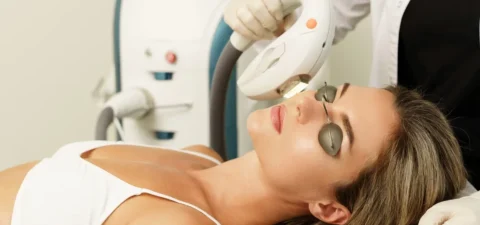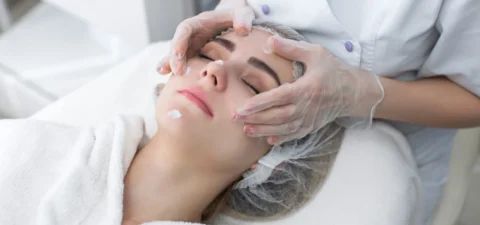For information only. Not meant as advice in any form. Please consult your medical professional or lawyer.
While estheticians can make a significant amount of money, sometimes they may need financial assistance to get the training needed to finish cosmetology school. In some cases, they can get a payment plan to finish their training, though sometimes it’s more common to find financial assistance or scholarship opportunities to finish their esthetics studies.
So how can you pay for esthetician school? There are several ways to get financial assistance from your esthetician training, from federal aid grant programs to student loan programs. If you have a financial need to finish your cosmetology/esthetics training, there are ways you can get it.
Ways You Can Pay for Esthetician School
Esthetician school isn’t the most expensive track you can take as training – and neither does it take particularly long. But for students that may come from low-income families or are starting over from other career tracks, the initial costs can be difficult to shoulder on your own.
There are several ways you can find financial assistance for esthetician school, but they generally fall under two types of aid:
1. Federal Financial Aid
Federal financial aid is a category of financial assistance where the government itself funds your cosmetology school tuition. Federal financial aid often falls under the Free Application for Federal Student Aid (FAFSA), which not only helps cover tuition costs but also increases the likelihood that you’ll actually finish school.
Keep in mind that FAFSA doesn’t apply to all institutions: your cosmetology school or beauty school has to fill a certain set of requirements to be eligible for federal financial aid programs:
- Certified by the Department of Education as a Title IV institute
- Have gotten accreditation by an agency approved by the Department of Education
- Have a license to operate in your home state
- Has esthetics programs that lead to licensure or employment
Not all cosmetology schools meet these requirements – though this doesn’t mean that you can’t get financial aid anymore. This just means you’ll need other sources of assistance aside from FAFSA.
a. Federal Pell Grant
The federal Pell Grant can subsidize up to $6000 for your tuition costs. This is the ideal option for esthetics or cosmetology students studying at a beauty school while also attending training. This subsidy is based on your income and is usually awarded to students with the highest financial needs.
b. Work-Study Programs
Some students can choose work-study programs where their tuition is effectively paid by working for their institute. Keep in mind that this type of aid is limited by the number of open positions in your institute, and is not guaranteed for most cases.
c. Federal Student Loans
Aside from FAFSA, the most common type of federal financial aid is issuing a student loan. The advantage of this approach (especially for a direct loan) is that you get the money upfront and you can spend it as you wish – but keep in mind that these programs will need to be repaid over time and can accrue interest.
d. State Assistance
Depending on your state, your institute may be covered by certain state incentives that can give you cash incentives or subsidies if you’re attending cosmetology or esthetics programs. These are more flexible since they don’t require the institute to have Title IV status, though all other processes for getting a federal loan program may still apply.
2. Private Financial Aid
If you don’t qualify for federal financial aid (or your institute doesn’t fill out the requirements), you can look to private financial aid options to fund your tuition costs. However, we highly recommend that you go through the process for federal financial aid whenever possible, since there are distinct disadvantages to going for private funding over federal:
- Fewer protections for you in case you can’t pay off a loan in time
- Stricter requirements overall for candidacy
- Has higher interest rates from any loans
- It will almost always need to be paid back
- Usually not dissolved from bankruptcy
That’s not to say that this type of financial aid isn’t something you should consider. If federal scholarships aren’t an option, a private student loan can still work for you if you’re financially stable and have a good credit score.
a. Private Scholarships
Most esthetics and cosmetology schools already offer their own scholarship options, especially if they’re part of an organization or a network of schools. The specifics of your esthetics or cosmetology scholarships can be discussed with your chosen institute’s financial aid officer.
b. Private Grants
Some organizations like the American Association of Cosmetology Schools offer need-based grants to esthetics or cosmetology students. This doesn’t fall under FAFSA regulations, but you will need to fill out a similar process with the organization that’s offering you your grant.
c. Private Loans
Private loans are arranged with any financial institution (usually a bank) and can have very strict requirements regarding eligibility and repayment. However, their terms are far more flexible to negotiate compared to federal financial aid, especially if you already have a great credit score.
How Much Does Financial Aid Cover For Esthetician School?
The amount of financial aid you’ll get for your esthetician training will really depend on the financial aid options you’ll go for. On average, financial aid options can cover anywhere from 40% to 60% of your total tuition fees, but keep in mind that the average can vary wildly depending on your chosen track and your school of choice.
How to Go to Esthetician School for Free
By far the best (and safest) way to go to esthetician school for free is to get a scholarship or grant programs that can cover the cost of your tuition fee entirely. Scholarship opportunities for estheticians are far more common than you might think, especially depending on the track that you choose.
Of course, like any scholarship, the important thing to keep in mind here is that your academic performance is key to keeping the benefits of your scholarship. Some estheticians will usually try to fit in their esthetics training with on-the-job experience or other side gigs: however, it’s generally discouraged for scholarship or grants students to do this so they can focus on excelling academically.
The important thing that you need to remember is these grant programs or financial aid options will most likely only cover your tuition fee. Supplies like esthetician kits or other expenses, while you’re studying, will not be covered by this – unless you have sponsorship from private grants that can reimburse the costs.
How to Pay for Your Esthetician License
In many cases, the cosmetology school or the beauty academy will be the ones responsible for processing and paying for an esthetician license. However, this covered cost is only for the initial processing and issuance of your license – you’ll still need to pay for biannual fees for renewal, reciprocity/endorsement yourself.
On average, these fees might reach around $100, depending on your state. The fees are paid directly to your state board of cosmetology. You can pay these fees online or at the office itself, depending on the regulations of your home state.
School vs. Practical Training
Given all of the requirements and situations discussed above, it may be tempting to simply skip cosmetology school altogether and go for apprenticeships and on-the-job training rather than academics. While this can certainly work, there are some caveats to not going through an institute:
- You have less leeway to make mistakes in a controlled setting, which is important if you’re learning about treatments for the first time.
- Apprenticeships and on-the-job training are not always that easy to find compared to federal financial aid and private loans.
- Your state may have strict requirements about what counts as esthetics training and may not accept apprenticeships or non-academic training.
- Moving your license may mean that you need to complete academic training in a new state.
- Academic institutions may have more opportunities in place for students career-wise compared to apprenticeships.
Get High-Quality Medical Tools and Supplies With FACE Med Store
Financial aid options exist for helping you afford esthetician training – but the specifics will often differ depending on your state, selected choice of school, and your abilities. Always check with the financial aid officer or the admissions office of your chosen cosmetology school or beauty school to see what financial assistance they can offer you.
FACE Med Store has extensive experience helping our clients provide high-quality cosmetic and medical treatments, supplying them with the tools and equipment they need. We balance accessibility with quality, helping providers and patients alike get their products and tools without having to worry too much about the cost.
For more information about us and our supplies, visit our website today.






